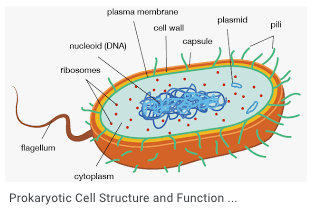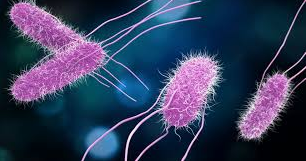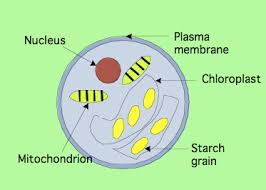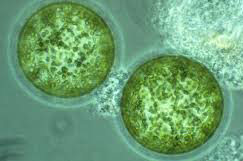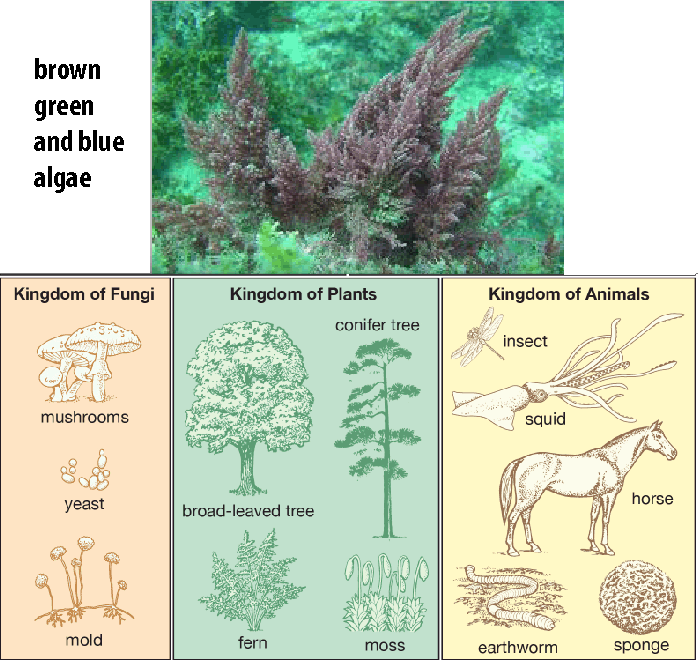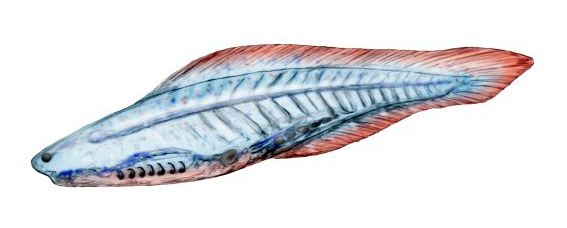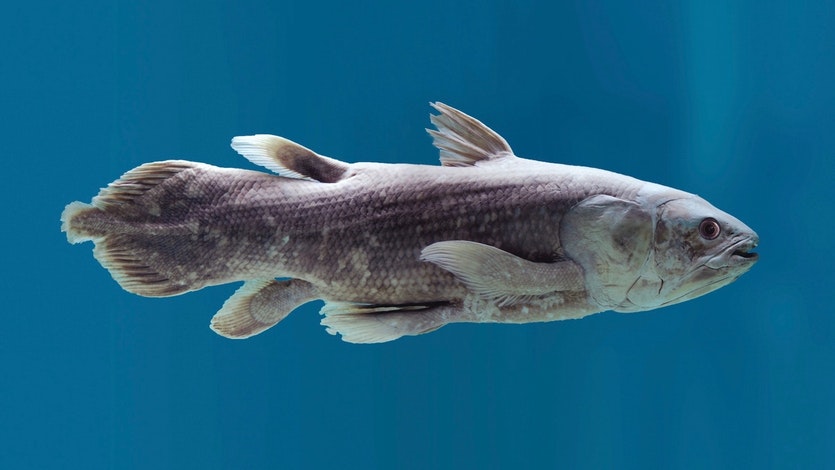Synthisophy
Skinwalkers - Chapter 18
The following are direct quotes from the book Tribe, On Homecoming and Belonging, by Sebastian Junger, May 2016, except for statements in italic added.
The ultimate act of disaffiliation isn’t littering or fraud, of course, but violence against your own people. When the Navajo Nation—the Diné, in their language—were rounded up and confined to a reservation in the 1860s, a terrifying phenomenon became more prominent in their culture. The warrior skills that had protected the Diné for thousands of years were no longer relevant in this dismal new era, and people worried that those same skills would now be turned inward, against society. That strengthened their belief in what were known as skinwalkers, or yee naaldlooshii.
Skinwalkers were almost always male and wore the pelt of a sacred animal so that they could subvert that animal’s powers to kill people in the community. They could travel impossibly fast across the desert and their eyes glowed like coals and they could supposedly paralyze you with a single look. They were thought to attack remote homesteads at night and kill people and sometimes eat their bodies. People were still scared of skinwalkers when I lived on the Navajo Reservation in 1983, and frankly, by the time I left, I was too.
Virtually every culture in the world has its version of the skinwalker myth. In Europe, for example, they are called werewolves (literally “man-wolf” in Old English). The myth addresses a fundamental fear in human society: that you can defend against external enemies but still remain vulnerable to one lone madman in your midst. Anglo-American culture doesn’t recognize the skinwalker threat but has its own version. Starting in the early 1980s, the frequency of rampage shootings in the United States began to rise more and more rapidly until it doubled around 2006. Rampages are usually defined as attacks where people are randomly targeted and four or more are killed in one place, usually shot to death by a lone gunman. As such, those crimes conform almost exactly to the kind of threat that the Navajo seemed most to fear on the reservation: murder and mayhem committed by an individual who has rejected all social bonds and attacks people at their most vulnerable and unprepared. For modern society, that would mean not in their log hogans but in movie theaters, schools, shopping malls, places of worship, or simply walking down the street.
Here is a list of skinwalkers, and their shooting rampages in the USA over the last 30 years. Note that from 1988 to 1997 there were 6; from 1998 to 2007 there were 9; from 2008 to 2017 there were 24. Why does it appear that over the last 10 years our society is generating a sharp increase in skinwalkers, individuals committing murder and mayhem who have rejected all social bonds and attack people at their most vulnerable and unprepared? Perhaps it is because, as Sebastion Junger stated, this “shows how completely detribalized this country has become.” Our neurological genetic predisposition, the warrior ethos, all for 1 and 1 for all, is no longer relevant in modern life. As individuals in society it appears we are now very far from our evolutionary roots.
In 2013, areport from the Congressional Research Service, known as Congress's think tank, described mass shootings as those in which shooters "select victims somewhat indiscriminately" and kill four or more people.
From: http://timelines.latimes.com/deadliest-shooting-rampages/
Mass shootings over last 30 years until October 1, 2017. And recent news from October 2 to December 31, 2017.
November 14, 2017: Rampaging through a small Northern California town, a gunman took aim on Tuesday at people at an elementary school and several other locations, killing at least four and wounding at least 10 before he was fatally shot by police, the local sheriff’s office said.
November 5, 2017: Devin Patrick Kelley carried out the deadliest mass shooting in Texas history on Sunday, killing 25 people and an unborn child at First Baptist Church in Sutherland Springs, near San Antonio.
October 1, 2017: 58 killed, more than 500 injured: Las Vegas
More than 50 people were killed and at least 500 others injured when a gunman opened fire at a country music festival near the Mandalay Bay Resort and Casino on the Las Vegas Strip, authorities said. Police said the suspect, 64-year-old Stephen Paddock, a resident of Mesquite, Nev., was was found dead after a SWAT team burst into the hotel room from which he was firing at the crowd.
Jan. 6, 2017: 5 killed, 6 injured: Fort Lauderdale, Fla.
After taking a flight to Fort Lauderdale-Hollywood International Airport in Florida, a man retrieves a gun from his luggage in baggage claim, loads it and opens fire, killing five people near a baggage carousel and wounding six others. Dozens more are injured in the ensuing panic. Esteban Santiago, a 26-year-old Iraq war veteran from Anchorage, Alaska, has pleaded not guilty to 22 federal charges.
May 28, 2017: 8 killed, Lincoln County, Miss. A Mississippi man went on a shooting spree overnight, killing a sheriff's deputy and seven other people in three separate locations in rural Lincoln County before the suspect was taken into custody by police, authorities said on Sunday.
Sept. 23, 2016: 5 killed: Burlington, Wash.
A gunman enters the cosmetics area of a Macy’s store near Seattle and fatally shoots an employee and four shoppers at close range. Authorities say Arcan Cetin, a 20-year-old fast-food worker, used a semi-automatic Ruger .22 rifle that he stole from his stepfather’s closet.
June 12, 2016: 49 killed, 58 injured in Orlando nightclub shooting
The United States suffered one of the worst mass shootings in its modern history when 49 people were killed and 58 injured in Orlando, Fla., after a gunman stormed into a packed gay nightclub. The gunman was killed by a SWAT team after taking hostages at Pulse, a popular gay club. He was preliminarily identified as 29-year-old Omar Mateen.
Dec. 2, 2015: 14 killed, 22 injured: San Bernardino, Calif.
Two assailants killed 14 people and wounded 22 others in a shooting at the Inland Regional Center in San Bernardino. The two attackers, who were married, were killed in a gun battle with police. They were U.S.-born Syed Rizwan Farook and Pakistan national Tashfeen Malik, and had an arsenal of ammunition and pipe bombs in their Redlands home.
Nov. 29, 2015: 3 killed, 9 injured: Colorado Springs, Colo.
A gunman entered a Planned Parenthood clinic in Colorado Springs, Colo., and started firing.
Police named Robert Lewis Dear as the suspect in the attacks.
Oct. 1, 2015: 9 killed, 9 injured: Roseburg, Ore.
Christopher Sean Harper-Mercer shot and killed eight fellow students and a teacher at Umpqua Community College. Authorities described Harper-Mercer, who recently had moved to Oregon from Southern California, as a “hate-filled” individual with anti-religion and white supremacist leanings who had long struggled with mental health issues.
July 16, 2015: 5 killed, 3 injured: Chattanooga, Tenn. A gunman opened fire on two military centers more than seven miles apart, killing four Marines and a Navy sailor. A man identified by federal authorities as Mohammod Youssuf Abdulazeez, 24, sprayed dozens of bullets at a military recruiting center, then drove to a Navy-Marine training facility and opened fire again before he was killed.
June 18, 2015: 9 killed: Charleston, S.C.
Dylann Storm Roof is charged with nine counts of murder and three counts of attempted murder in an attack that killed nine people at a historic black church in Charleston, S.C. Authorities say Roof, a suspected white supremacist, started firing on a group gathered at Emanuel African Methodist Episcopal Church after first praying with them. He fled authorities before being arrested in North Carolina.
May 23, 2014: 6 killed, 7 injured: Isla Vista, Calif.
Elliot Rodger, 22, meticulously planned his deadly attack on the Isla Vista community for more than a year, spending thousands of dollars in order to arm and train himself to kill as many people as possible, according to a report released by the Santa Barbara County Sheriff’s Office. Rodger killed six people before shooting himself.
April 2, 2014: 3 killed; 16 injured: Ft. Hood, Texas
A gunman at Fort Hood, the scene of a deadly 2009 rampage, kills three people and injures 16 others, according to military officials. The gunman is dead at the scene.
Sept. 16, 2013: 12 killed, 3 injured: Washington, D.C. Aaron Alexis, a Navy contractor and former Navy enlisted man, shoots and kills 12 people and engages police in a running firefight through the sprawling Washington Navy Yard. He is shot and killed by authorities.
June 7, 2013: 5 killed: Santa Monica
John Zawahri, an unemployed 23-year-old, kills five people in an attack that starts at his father’s home and ends at Santa Monica College, where he is fatally shot by police in the school’s library.
Dec. 14, 2012: 27 killed, one injured: Newtown, Conn.
A gunman forces his way into Sandy Hook Elementary School in Newtown, Conn. and shoots and kills 20 first graders and six adults. The shooter, Adam Lanza, 20, kills himself at the scene. Lanza also killed his mother at the home they shared, prior to his shooting rampage.
Aug. 5, 2012: 6 killed, 3 injured: Oak Creek, Wis.
Wade Michael Page fatally shoots six people at a Sikh temple before he is shot by a police officer. Page, an Army veteran who was a “psychological operations specialist,” committed suicide after he was wounded. Page was a member of a white supremacist band called End Apathy and his views led federal officials to treat the shooting as an act of domestic terrorism.
July 20, 2012: 12 killed, 58 injured: Aurora, Colo.
James Holmes, 24, is taken into custody in the parking lot outside the Century 16 movie theater after a post-midnight attack in Aurora, Colo. Holmes allegedly entered the theater through an exit door about half an hour into the local premiere of “The Dark Knight Rises.”
April 2, 2012: 7 killed, 3 injured: Oakland
One L. Goh, 43, a former student at a Oikos University, a small Christian college, allegedly opens fire in the middle of a classroom leaving seven people dead and three wounded.
Jan. 8, 2011: 6 killed, 11 injured: Tucson, Ariz.
Jared Lee Loughner, 22, allegedly shoots Arizona Rep. Gabrielle Giffords in the head during a meet-and-greet with constituents at a Tucson supermarket. Six people are killed and 11 others wounded.
Nov. 5, 2009: 13 killed, 32 injured: Ft. Hood, Texas
Maj. Nidal Malik Hasan, an Army psychiatrist, allegedly shoots and kills 13 people and injures 32 others in a rampage at Ft. Hood, where he is based. Authorities allege that Hasan was exchanging emails with Muslim extremists including American-born radical Anwar Awlaki.
April 3, 2009: 13 killed, 4 injured: Binghamton, N.Y.
Jiverly Voong, 41, shoots and kills 13 people and seriously wounds four others before apparently committing suicide at the American Civic Assn., an immigration services center, in Binghamton, N.Y.
Feb. 14, 2008: 5 killed, 16 injured: Dekalb, Ill.
Steven Kazmierczak, dressed all in black, steps on stage in a lecture hall at Northern Illinois University and opens fire on a geology class. Five students are killed and 16 wounded before Kazmierczak kills himself on the lecture hall stage.
Dec. 5, 2007: 8 killed, 4 injured: Omaha
Robert Hawkins, 19, sprays an Omaha shopping mall with gunfire as holiday shoppers scatter in terror. He kills eight people and wounds four others before taking his own life. Authorities report he left several suicide notes.
April 16, 2007: 32 killed, 17 injured: Blacksburg, Va.
Seung-hui Cho, a 23-year-old Virginia Tech senior, opens fire on campus, killing 32 people in a dorm and an academic building in attacks more than two hours apart. Cho takes his life after the second incident.
Feb. 12, 2007: 5 killed, 4 injured: Salt Lake City
Sulejman Talovic, 18, wearing a trenchcoat and carrying a shotgun, sprays a popular Salt Lake City shopping mall. Witnesses say he displays no emotion while killing five people and wounding four others.
Oct. 2, 2006: 5 killed, 5 injured: Nickel Mines, Pa.
Charles Carl Roberts IV, a milk truck driver armed with a small arsenal, bursts into a one-room schoolhouse and kills five Amish girls. He kills himself as police storm the building.
July 8, 2003: 5 killed, 9 injured: Meridian, Miss.
Doug Williams, 48, a production assemblyman for 19 years at Lockheed Martin Aeronautics Co., goes on a rampage at the defense plant, fatally shooting five and wounding nine before taking his own life with a shotgun.
Dec. 26, 2000: 7 killed: Wakefield, Mass.
Michael McDermott, a 42-year-old software tester shoots and kills seven co-workers at the Internet consulting firm where he is employed. McDermott, who is arrested at the offices of Edgewater Technology Inc., apparently was enraged because his salary was about to be garnished to satisfy tax claims by the Internal Revenue Service. He uses three weapons in his attack.
Sept. 15, 1999: 7 killed, 7 injured: Fort Worth
Larry Gene Ashbrook opens fire inside the crowded chapel of the Wedgwood Baptist Church. Worshipers, thinking at first that it must be a prank, keep singing. But when they realize what is happening, they dive to the floor and scrunch under pews, terrified and silent as the gunfire continues. Seven people are killed before Ashbrook takes his own life.
April 20, 1999: 13 killed, 24 injured: Columbine, Colo.
Eric Harris and Dylan Klebold, students at Columbine High, open fire at the school, killing a dozen students and a teacher and causing injury to two dozen others before taking their own lives.
March 24, 1998: 5 killed, 10 injured: Jonesboro, Ark.
Middle school students Mitchell Johnson and Andrew Golden pull a fire alarm at their school in a small rural Arkansas community and then open fire on students and teachers using an arsenal they had stashed in the nearby woods. Four students and a teacher who tried shield the children are killed and 10 others are injured. Because of their ages, Mitchell. 13, and Andrew, 11, are sentenced to confinement in a juvenile facility until they turn 21.
Dec. 7, 1993: 6 killed, 19 injured: Garden City, N.Y.
Colin Ferguson shoots and kills six passengers and wounds 19 others on a Long Island Rail Road commuter train before being stopped by other riders. Ferguson is later sentenced to life in prison.
July 1, 1993: 8 killed, 6 injured: San Francisco
Gian Luigi Ferri, 55, kills eight people in an office building in San Francisco’s financial district. His rampage begins in the 34th-floor offices of Pettit & Martin, an international law firm, and ends in a stairwell between the 29th and 30th floors where he encounters police and shoots himself.
May 1, 1992: 4 killed, 10 injured: Olivehurst, Calif.
Eric Houston, a 20-year-old unemployed computer assembler, invades Lindhurst High School and opens fire, killing his former teacher Robert Brens and three students and wounding 10 others.
Oct. 16, 1991: 22 killed, 20 injured: Killeen, Texas
George Jo Hennard, 35, crashes his pickup truck into a Luby’s cafeteria crowded with lunchtime patrons and begins firing indiscriminately with a semiautomatic pistol, killing 22 people. Hennard is later found dead of a gunshot wound in a restaurant restroom.
June 18, 1990: 10 killed, 4 injured: Jacksonville, Fla.
James E. Pough, a 42-year-old day laborer apparently distraught over the repossession of his car, walks into the offices of General Motors Acceptance Corp. and opens fire, killing seven employees and one customer before fatally shooting himself.
Jan. 17, 1989: 5 killed, 29 injured: Stockton, Calif.
Patrick Edward Purdy turns a powerful assault rifle on a crowded school playground, killing five children and wounding 29 more. Purdy, who also killed himself, had been a student at the school from kindergarten through third grade.Police officials described Purdy as a troubled drifter in his mid-20s with a history of relatively minor brushes with the law. The midday attack lasted only minutes.
July 18, 1984: 21 killed, 19 injured: San Ysidro, Calif.
James Oliver Huberty, a 41-year-old out-of-work security guard, kills 21 employees and customers at a McDonald’s restaurant. Huberty is fatally shot by a police sniper perched on the roof of a nearby post office.
Synthisophy
Integrate the Wisdoms of History into Present Culture
Addressing the polarized political climate in the USA
Add Text Here...
.
Synthisophy 527
Lesson 3: Chapter 2 - Evolution and Human Evolution
Watch the video: http://www.synthisophy.com/2-human-evolution.html
...which only discusses human evolution, summarize and expand upon this in front of the class. Scroll down to the evolution chart at the bottom of the page, discuss that…..
Then you will go back in time to address Evolution of life from the beginning.
Atomic – atoms – show periodic table of elements
Molecular – atoms bind together to form molecules – show examples
Biochemical – molecules interact in chemical reactions – show examples
Organelles – part of a cell where chemical reactions take place – show examples
Cell – all this taking place in a single cell – show examples
Organs – group of cells functioning within a unit for a purpose – shows examples
The whole living organism
Let’s keep this in mind and look at evolution of life on earth
Look at periodic table, look at carbon, the living atom, and other important elements in living organisms: Oxygen and Nitrogen to a large extent, with many of the other elements like chlorine, sodium, potassium, calcium and many others…
Life first emerged on the earth about 4 and 3.5 billion years ago, when certain molecules had developed that somehow reacted with each other to form a living thing that could reproduce itself. Exactly what happened and how this happened is not known, but at some point in time it must have happened, because there is life on the planet and we are talking about it right now. These organisms developed into single celled organisms, now called prokaryotes, the simplest form of life are bacteria and archaea (R key ah), which can live in extreme environments (in terms of temperature, salt content and/or pH), and are thought to be the closest to the first living cells that emerged 3.5 billion years ago:
The next step in evolution was the appearance of single celled eukaryotes 2.7 billion years ago. These cells have a well defined nucleus, mitochondria and other organelles, an organelle being an “organ” with a particular purpose inside the cell. Notice above that prokaryotes do not have a nucleus or organelles. Also note that mitochondria in eukaryotes contain different DNA then the nucleus of the cell, so what most likely happened here was a eukaryotic cell absorbed a prokaryotic cell that then became a critical part of that cell – the mitochondria – mitochondria provide chemical energy for the cell. Examples of single celled eukaryotes are protozoa, and species of algae that are single celled.
Algae structure and function
The DNA is like the architectural blueprint of the cell, it code
The DNA is like the architectural blueprint of the cell, it codes the information from which the cell creates itself, and how it functions and reproduces itself, the difference being, a blueprint has all the information to construct something, but the blueprint does construct or reproduce itself – a cell and a living organism does.
Multicellular eukaryotic organisms appeared on the planet about 1 billion years ago. That’s when somehow single celled eukaryotic organisms figured out a way to be more productive, and more reproductive, if they merged together forming a multicellular organism. Examples of eukaryotic organisms are brown, red, and green algae, fungus, plants and animals.
Let’s follow the evolution of eukaryotic organisms from their start 1 billion years ago.
Six hundred million years ago simple multicellular organisms (simple from our perspective, but the most complex at the time) similar to jellyfish and worms split evolutionarily into what would become two different groups of animals, vertebrates and invertebrates, as in fish/amphibians/reptiles/mammals and insects/spiders/crab/shrimp, etc…
The appearance of fish in the evolutionary record started about 500 million years ago primarily in the oceans of the earth.
Haikouichthys
Coelacanth

